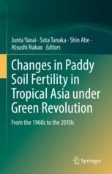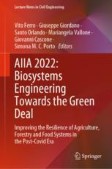Search
Search Results
-
Boron deficiency decreased the root activity of Ga-exposed rice seedlings by reducing iron accumulation and increasing Ga in iron plaque
Gallium (Ga) is an emerging chemical pollutant chiefly associated with high-tech industries. Boron (B) alleviates the negative effects of toxic...

-
Ecological implications of boron and sulfur in sediments from a lake in the Nile Delta: Remote sensing, fractionation and ecotoxicity
PurposeThe study aimed to provide an overview of the behavior, fate and ecotoxicity of boron and sulfur in the sediments of Lake Burullus, Egypt,...

-
Boron accumulation in soil, sediment, and plant of wastewater-irrigated areas in Tian**, China
The aim of this study was to investigate the accumulation of boron (B) in the soils, sediments, and plants in the wastewater (treated and untreated)...

-
Ultrasound-assisted formation of tetrafluoroborate: methylene blue for microextraction and flow based spectrophotometric determination of the boron
This research aims to introduce the easy, inexpensive and fast analytical method for spectrophotometric measurement of boron in water samples. Here,...

-
Boron Adsorption-Desorption by Steelmaking Slag for Boron Removal from Irrigation Waters
Steelmaking slag, a by-product of the steel-refining process, could be used for removing boron excess from irrigation natural and waste waters, due...

-
Geochemical phases of soil and the bioaccessibility of some elements in soils and vegetables from boron mines
The bioaccessibility of some elements (As, B, Cd, Cu, Fe, Mn, Ni and Zn) in soils and vegetables was determined using the physiologically based...

-
Integrated application of plant bioregulator and micronutrients improves crop physiology, productivity and grain biofortification of delayed sown wheat
Delay sowing of wheat is a common problem in Punjab that exacerbates serious yield loss. To reduce yield loss and improve yield, different...

-
Changes in Paddy Soil Fertility in Thailand Under the Green Revolution During the Last 50 Years
In Thailand, the Green Revolution initiated in the late 1960s contributed to a drastic increase in both food production and human population....
-
Evaluating the attenuation of naphthenic acids in constructed wetland mesocosms planted with Carex aquatilis
Surface oil sands mining and extraction in northern Alberta’s Athabasca oil sands region produce large volumes of oil sands process–affected water...

-
Microbial Biofertilizers and Micronutrients Bioavailability: Approaches to Deal with Zinc Deficiencies
Micronutrients like boron, iron, manganese, zinc, and copper, although required in small quantities, are essential for plant health and growth....
-
Methodologies for the Detection and Remediation of Organic Micropollutants in Terrestrial Ecosystems
At present, most of the terrestrial ecosystems are highly contaminated, due to continuous discharge of a diverse range of organic micropollutants...
-
Evaluation of Precision Technologies Approach for the Management of an Experimental Field in Organic Fruit Growing
Understanding the main growing crop parameters is the key factor in precision and sustainable agriculture, therefore, the use of remote geophysical...
-
Sediment contamination of an urban canal—a case study approach for an integrated assessment of organic sediment contamination
PurposeThe pesticide DDT and its metabolites represent a contamination risk for the aquatic environment, especially the polar metabolite DDA. The...

-
Soil quality in the urban gardens of Barcelona (Spain)
PurposeUrban agriculture is expanding worldwide and is being promoted by the FAO as a strategic activity because of its environmental,...

-
Inhibition of sediment internal phosphorus release in agricultural drainage ditches by ceria nanoparticle cap**
In this study, ceria nanoparticles (CNPs) were introduced as an in-situ cap** agent to inhibit the release of phosphorus (P) from sediments of...

-
Biochar co-applied with organic amendments increased soil-plant potassium and root biomass but not crop yield
PurposeBiochar can improve soil nutrient retention and alleviate salinity; however, use is not widespread due to cost. Biochar is usually co-applied...

-
Cadmium Stress Alleviation: Interplay of Micronutrients and Enzymatic/Non-enzymatic Species in Maize by Organic and Inorganic Amendments
With the advancement in industrialization and to cope with the ever-increasing demand for food, the farmer community is compelled to use various...

-
Faecal sludge pyrolysis as a circular economic approach to waste management and nutrient recovery
The disposal of faecal sludge from non-networked sanitation amenities leads to contamination of the surrounding environment and increasing public...

-
Water resources availability in southern Europe at the basin scale in response to climate change scenarios
BackgroundClimate and the hydrological cycle are closely linked; therefore, in the most likely scenarios of climate change, the increase in...

-
Use of Additives in Composting Promotes Passivation and Reduction in Bioavailability of Heavy Metals (HMs) in Compost
Composting influences heavy metal (HM) speciation by transforming the exchangeable and reducible forms of HMs to oxidisable and residual forms,...

